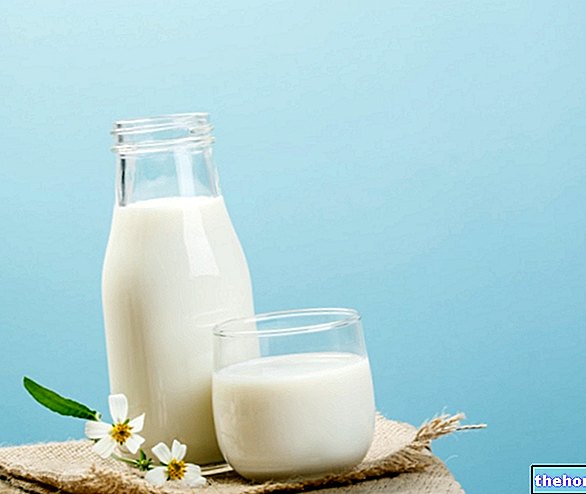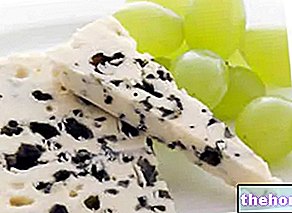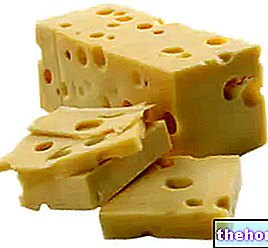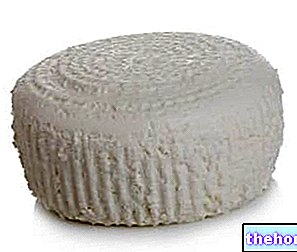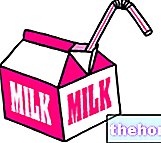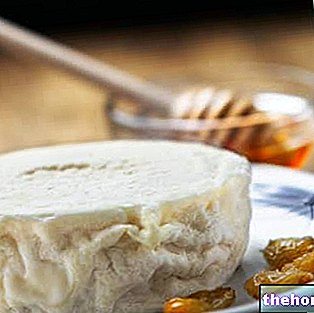Salva cremasco is a dairy product made from whole or partially skimmed cow's milk, pasteurized, with raw, white, soft paste, dark yellow rind, washed, and aged for at least 75 days. It shows unique chemical-physical characteristics: the shape of the cheese is parallelepiped with faces of 12-18 cm, straight side of about 10 cm, weight of 1.3-5.0 kg, thin and sometimes flowery rind. The paste, scarcely and irregularly looked, is compact and crumbly; the consistency is more tender under the rind due to the centripetal ripening, the color between white and straw yellow. Note: reading various sources, many discrepancies emerge on the production technique of the Salva Cremasco PDO. This may depend on the year in which the texts were written, which may precede the modifications of the DOP specification, or on a misunderstanding between the production technique of the simple Salva cremasco and the DOP one, certainly more restrictive.
The production of Salva Cremasco begins with the pasteurization of the milk. At 36-38 ° C, rennet and lactic bacteria are added to promote coagulation. Once the curd has formed, it is broken with the use of a particular tool made up of various metal wires, until it leaves lumps the size of a hazelnut. The mixture drips and is placed in the molds to be purged. Once compact, we proceed with the dry salted or in brine, and then begin the maturation which lasts at least 75 days - some sources report a minimum of two months - and on average no more than 8 months - some sources report a maximum of 5 months, others even 3 years - time during which the rind is repeatedly rubbed with salt water; some are covered with pomace.
Salva cremasco mainly has the role of table cheese. It is used as an appetizer, main course and as an end of a meal / dessert. There is no shortage of culinary applications, widespread mainly in the place of production, which see it as the protagonist above all in fondues, sauces for first courses and as an ingredient in mixed salads.
with high biological value, vitamins and minerals specific to milk.
It has a more than significant caloric and lipid content, which tend to increase with the progress of aging. Calories are mostly supplied by fatty acids, followed by proteins and possibly by traces of carbohydrates - mainly visible in the 7-day aged one. The lipid chains are mainly of the saturated type, the peptides of high biological value - that is, they supply all the essential amino acids in the right proportions and quantities compared to the human protein model - and any soluble / simple carbohydrates - such as disaccharide lactose.
By extending the maturation beyond 75 days, the chemical composition of the Salva cremasco tends to change slightly due to dehydration and maturation. Initially, lactose decreases - which is degraded into lactic acid by physiological bacteria - increases histamine - which is formed, initially by the microflora and then spontaneously, by decarboxylation of free histidine - decreases the water - evaporated during aging - and on the whole, it could be said that it increases the nutritional concentration - the so-called dry matter per 100 g.
Salva cremasco does not contain fiber and is rich in cholesterol. The amount of purines, as for other foods of the same food group, is quite low. It does not provide gluten.
The vitamin profile of Salva Cremasco is characterized by the abundance of riboflavin (vitamin B2) and retinol or equivalent (vitamin A and / or RAE). Many other water-soluble factors of group B are fairly concentrated, such as thiamine (vitamin B1) and niacin (vit PP).
As for the minerals, on the other hand, the cheese shows significant concentrations of calcium, phosphorus and sodium chloride.
against overweight - which must be low-calorie and normolipidic.The prevalence of saturated over unsaturated fatty acids, associated with the abundance of cholesterol, makes the salva cremasco unsuitable in case of hypercholesterolemia.
Containing proteins of high biological value, Salva Crema can be considered an excellent source of essential amino acids. It is recommended in all circumstances that require an increase in the intake of these nutrients; indicative examples are: general and specific malnutrition, chronic malabsorption and increased specific needs, for example: pregnancy, breastfeeding or practice of intense and prolonged sport, etc. The use of cheese as a nutritional source of high biological value proteins / amino acids essential is however limited by its less desirable properties - see cholesterol, saturated fat and sodium - which, in a balanced diet, require the use of moderate portions and a low frequency of consumption.
Lactose, in itself almost absent due to the effect of lactic fermentation, can still be annoying for the hypersensitive intolerant. It is also worth noting a relative increase in the concentration of histamine, especially in the aged forms, which makes it inappropriate in case of specific intolerance. Gluten free and low in purines, it is instead relevant to the diet against celiac disease, hyperuricemia / gout and the tendency to kidney stones (renal lithiasis) from uric acid.
Given the wide range of water-soluble vitamins of group B, which mainly perform the role of cellular coenzymes, the salva cremasco can be considered a useful food to support the metabolic processes of various tissues. Fat-soluble vitamin A and / or its equivalents are also abundant. (RAE), necessary to maintain intact visual function, reproduction capacity, cell differentiation, antioxidant defense, etc.
Due to the high percentage of sodium, Salva Cremasco is allowed in the preventive and / or therapeutic diet for sodium sensitive arterial hypertension.
The richness of calcium and phosphorus is a very useful feature for guaranteeing the balance of skeletal metabolism, a very delicate process in fetal development, in the growth phase of the child and in old age - due to the tendency to osteoporosis. Notes: remember that for bone health it is necessary to ensure a correct intake of vitamin D or an adequate sun exposure.
Salva Cremasco PDO cheese is not allowed in the vegan diet. Furthermore, due to the presence of animal rennet, it must also be excluded in vegetarian and Hindu religion. It has no contraindications for the Muslim and Jewish religions. The opinion of observant Buddhists can be contradictory.
For a healthy person, the frequency of consumption of cheese, used as a dish, is roughly 1-2 times a week, with an average portion of about 80 g.
- melted or diced Salva Cremasco DOP. More modern recipes, hot and cold, can be: vol au vent with cream sauce fondue; ravioli di salva cremasco; risotto with asparagus creamed with cremasco sauce; salad with catalogna, Salva cremasco, pears and balsamic vinegar; save cremasco with walnuts and honey; omelette with cremasco sauce; meat rolls and cremasco salvage fondue etc.The traditional food and wine combination is with red wine from Valtellina DOC.
. In addition to its characteristic shape, the Cremasco saver is distinguishable by the capital letter "S C" engraved on one of the faces.
The pasta of the Salva Cremasco is white in color with minimal maturation and tending to straw yellow, increasing the maturation; it has a fairly compact consistency, softer on the outside - characteristic of centripetal ripening cheeses - crumbly, with possible very fine, sparse and irregular holes. The smell and taste are characteristic, intense, while the taste is marked by acidic connotations.
whole or, marginally, partially skimmed. The milk is not left raw, it is instead subjected to pasteurization.The curd is formed by rennet acid coagulation, induced by the "inoculation of bacterial starters and animal or synthetic rennet, at a temperature of about 37 ° C for 30".
The curd is then broken, not once but twice, to obtain fragments the size of a hazelnut.
The mass is then drained and placed in the special molds to purge-stew for 8-16 hours in a humid environment.
The shapes, now compact, are extracted and subjected to dry salting, as tradition dictates, or in brine.
Finally the seasoning, which can last from 60 days to 36 months. Some sources report a minimum of 75 days, others a maximum of only 5 months; the reason for these discrepancies is unclear.
During maturing the wheels are often turned and the rind washed with water and salt; once it was anointed with linseed oil. Some producers still use to cover the rind of the cheese with pomace.
Milk, Dairy Products and Cheeses Asiago Brie Burrata Caciocavallo Rennet Camembert Cheddar Milk Cream Crescenza Emmental Feta Milk Flakes Fontina Herbal Cheeses Lean Cheeses Cheeses rich in calcium Gorgonzola Gouda Grana Padano Gruyere Kéfalair Adapted milk Artificial milk Condensed milk Asphyxiated milk Goat's milk Sheep's milk Rice milk Soy milk Powdered milk and concentrated milk Skimmed and semi-skimmed milk Lactose-free milk Milk Vegetable milk Dairy products Lerdammer Mascarpone Montasio Buffalo mozzarella Mozzarella Whipped cream Cooking cream Fresh cream Parmigiano Reggiano Pecorino Philadelphia Primo Sale Provolone Ricotta Robiola Roquefort Scamorza Sottilette Squacquerone Taleggio Tomino Yogurt OTHER ARTICLES MILK AND DERIVATIVES Categories Alcoholic foods Meat Cereals and derivatives Sweeteners Sweets Offal Fruit Dried fruit Milk and derivatives Legumes Oils and fats Fish and fishery products Cold cuts S pezie Vegetables Health recipes Appetizers Bread, Pizza and Brioche First courses Second courses Vegetables and Salads Sweets and Desserts Ice creams and sorbets Syrups, liqueurs and grappa Basic preparations ---- In the kitchen with leftovers Carnival recipes Christmas recipes Light diet recipes Women's Day, Mum, Dad Recipes Functional Recipes International Recipes Easter Recipes Recipes for Celiacs Recipes for Diabetics Recipes for Holidays Recipes for Valentine's Day Recipes for Vegetarians Protein Recipes Regional Recipes Vegan Recipes
